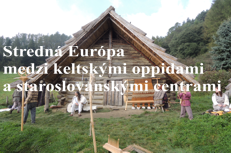Research team: Mgr. Michal Holeščák, PhD., Mgr. Andrea Slaná, PhD.
Year of excavation: 2018
Method of excavation: systematic, for scientific and documentation purposes
Type of locality: medieval stronghold
Dating: Late Medieval Period (13th – 14th centuries)
Current systematic archaeological excavations of the locality Hradisko in Divinka is concluded by the Institute of Archaeology of SAS and Museum of Považie region in Žilina. In the year 2018 was concluded first season and the projects counts on second season in the year 2019. Excavations and their analysis is made under the grant APVV-15-0330.
The site is known in literature, it was described for the first time by A. Petrovský-Šichman in the year 194, who considered it to be a Early Medieval guard post without permanent settlement, protecting the entry road to the site Veľký vrch. J. Moravčík, together with J. Pavelčík, P. Kouřil and O. Šedo made here small excavations in the year 1982, with few unspecified ditches on the peak and in front of the wall. Found ceramic shards were dated to the 12th – 13th centuries. Site was also included in the work of J. Malec and R. Huszár concerning the small fortified strongholds in the north-eastern Slovakia in the year 2010.
The locality is a cone shaped peak of a hill with visible rampart wall on one side of it´s base. It is situated in the forest terrain and it is crossed by the cadaster border between villages Divina and Divinka. In the year 2018, the excavations were made on two places. One ditch cut the rampart wall, verifying its anthropogenous origin. Samples from burned remains of the internal structure of the wall were send for radiocarbon dating.
Second ditch crossed whole peak area of the site with intention to closely examine the configuration of natural and manmade layers. We found out, that the highest part of the cone peak is mostly made of bedrock, with only 20 – 30 cm thin layer of earth on it. The area where we theoretically expect the main wooden tower was totally damaged by the building of modern triangulation tower in the 20th century and didn´t contain any archaeological material. The peak was divided from the rest of the site by a palisade ditch cut in the bedrock.
Under the peak was a prolonged platform, containing mostly pottery shards, dated to the 13th century and a few objects. On its outside edge was one more wall, destroyed by fire. Excavations on this place were paused until the next season.
Before the main archaeological excavations, survey using the metal detectors was also concluded on the locality. Hand in hand with cleaning the site from the recent refuse were found mostly iron arrowheads dated to the 13th or beginning of the 14th century and one medieval belt clasp. Locality was geodetically measured and chosen parts were surveyed by geophysical methods.



